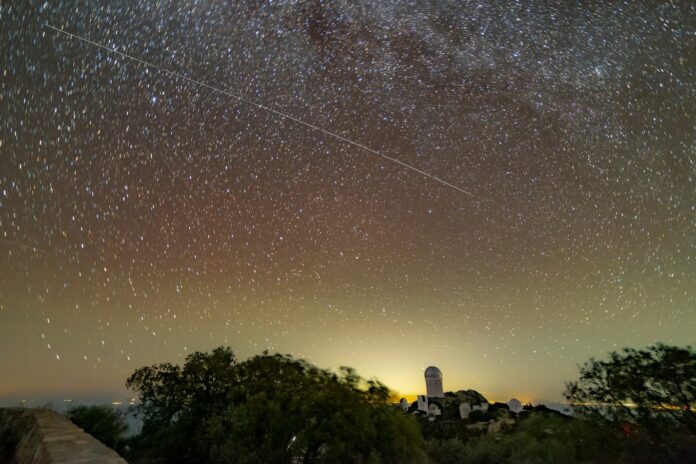After Elon Musk’s Starlink Constellation, A Powerful New Satellite That Outshines the Stars Causing a Headache for Astronomers
Observations of the BlueWalker 3 prototype satellite reveal it to be a standout presence in the night sky, eclipsing all celestial bodies but the most brilliant stars.
Astronomers are sounding the alarm, expressing concerns that large satellite constellations like the BlueWalker 3 satellite could disrupt night sky observations and radio astronomy on Earth if no mitigation measures are taken.
Numerous companies have intentions to deploy “constellations” of satellites, potentially numbering in the hundreds, designed to offer global mobile and broadband services. However, these satellites need to operate in low-Earth orbit, and their substantial size raises significant concerns about their potential to interfere with the observation of celestial phenomena.
In response, an international consortium of scientists, led by astronomers from the IAU Centre for the Protection of the Dark and Quiet Sky from Satellite Constellation Interference (CPS), in collaboration with researchers from Imperial College London, has published a comprehensive analysis in Nature, evaluating the precise impact of the BlueWalker 3 satellite prototype on the field of astronomy.
Dr. Dave Clements, affiliated with the Department of Physics at Imperial, emphasized the uniqueness of the night sky as a laboratory for scientific experimentation beyond terrestrial confines.
He stressed: “The night sky is a unique laboratory that allows scientists to conduct experiments that cannot be done in terrestrial laboratories. Astronomical observations have provided insights into fundamental physics and other research at the boundaries of our knowledge and changed humanity’s view of our place in the cosmos. The pristine night sky is also an important part of humanity’s shared cultural heritage and should be protected for society at large and for future generations.”
BlueWalker 3, launched into low-Earth orbit by AST SpaceMobile on September 10, 2022, as a precursor to a constellation comprising over a hundred similar satellites for mobile communications, swiftly earned recognition as one of the brightest celestial objects.
To assess its effects on astronomy more comprehensively, the CPS initiated a worldwide observational campaign, soliciting contributions from both professional and amateur astronomers across the globe, including sites in Chile, the US, Mexico, Aotearoa New Zealand, the Netherlands, and Morocco.
The collected data, spanning 130 days of observations, unveil a significant surge in BlueWalker 3’s brightness coinciding with the full deployment of its antenna array—a commercial antenna system measuring 64 square meters, the largest ever placed in low-Earth orbit.
Additionally, a subset of these observations aided in determining the satellite’s trajectory over time. By comparing the predicted path with real observations, the authors assessed prediction accuracy, accounting for variables such as atmospheric drag.
Precise satellite positioning is essential for astronomers to either avoid them or incorporate their presence into their data collection. However, mitigating their brightness beyond obscuring their position remains challenging, resulting in data loss for that section of the sky.
In addition to visible light interference, BlueWalker 3’s radio frequency emissions could also disrupt radio astronomy, as they operate in proximity to the wavelengths observed by radio telescopes. While some telescopes are located within designated radio-quiet zones, these protections currently extend solely to terrestrial transmitters and may not cover satellite transmissions.
Dr. Mike Peel, co-lead of IAU CPS’s Sathub and a researcher in Imperial’s Department of Physics, highlighted BlueWalker 3’s active transmission in radio frequency bands close to those reserved for radio astronomy.
According to the expert, Existing observatory safeguards against radio interference may prove insufficient. Further research is imperative to develop strategies for shielding existing and forthcoming telescopes from the numerous satellites slated for launch in the coming decade.
The IAU and CPS partners acknowledge the crucial role of these new satellite constellations in enhancing global communications. However, the potential interference with astronomical observations underscores the necessity for responsible deployment, minimizing adverse effects on our exploration of the cosmos.
Observations of BlueWalker 3 will persist, with plans to investigate its thermal emissions later this year.
The ongoing discourse on this matter will continue at the forthcoming IAU Symposium: “Astronomy and Satellite Constellations: Pathways Forward” in October.
Source: 10.1038/s41586-023-06672-7
Image Credit: KPNO/NOIRLab/IAU/SKAO/NSF/AURA/R. Sparks
